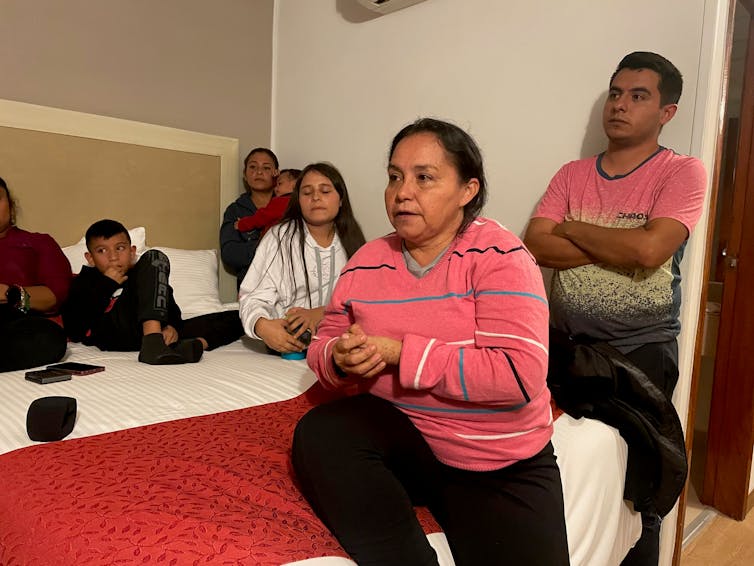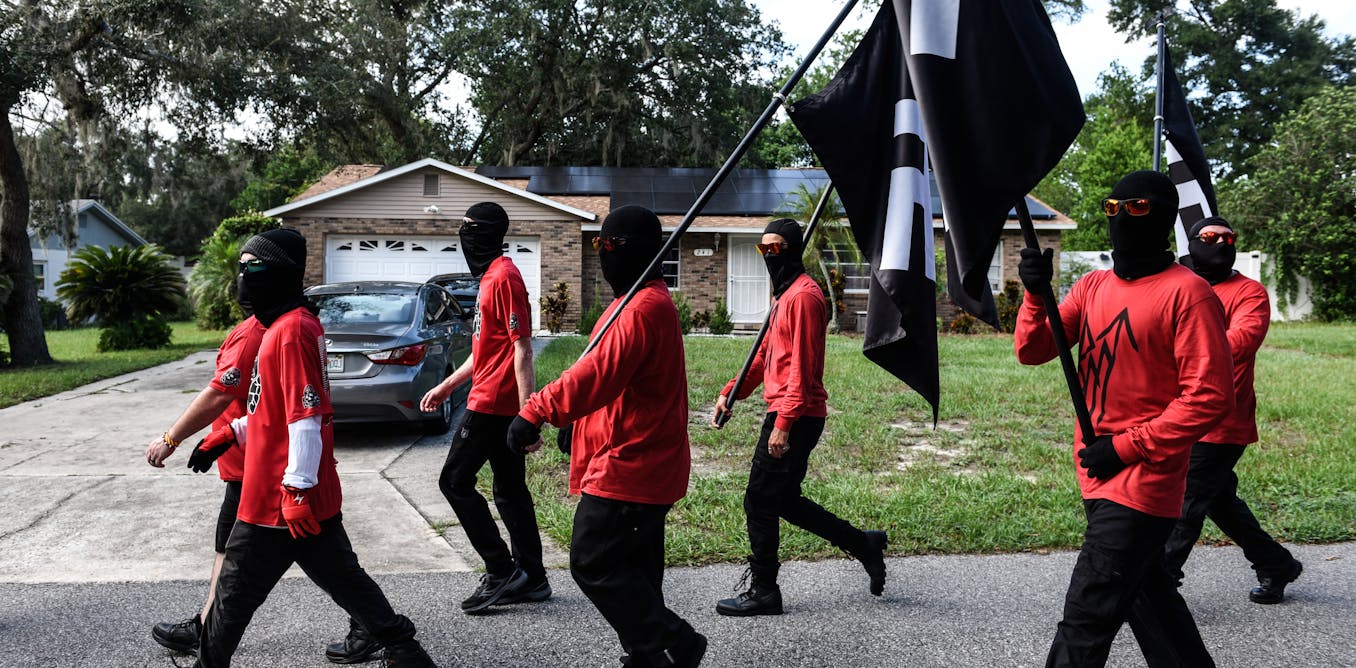The Mexican security forces tracking Nemesio Oseguera Cervantes – the leader of a deadly drug cartel that has been a top driver of violence in Mexico and narcotic addiction in America – thought they finally had him cornered on May 1, 2015.
Four helicopters carrying an arrest team whirled over the mountains near Mexico’s southwestern coast toward Cervantes’ compound in the town of Villa Purificación, the heart of the infamous Jalisco Nueva Generación cartel.
As the lead helicopter pulled within range, bullets from a truck-mounted, military-grade machine gun on the ground struck the engine. Before it reached the ground, the massive helicopter was hit by a pair of rocket-powered grenades.
ATF
Four soldiers from Mexico’s Secretariat of National Defense were killed in the crash. Three more soldiers were killed in the firefight that followed, and another 12 were injured.
The engagement was the first known incident of a cartel shooting down a military aircraft in Mexico. The cartel’s retaliation for the attempted arrest was swift and brutal. It set fire to trucks, buses, banks, gasoline stations and businesses. The distractions worked. Cervantes, also known as “El Mencho,” escaped.
The Browning machine gun that took down the helicopter was traced to a legal firearm purchase in Oregon made by a U.S. citizen. And a Barrett .50-caliber rifle used in the ambush was traced to a sale in a U.S. gun shop in Texas 4½ years before.
Many military-grade weapons like these are trafficked into Mexico from the U.S. each year, aided by loose standards for firearm dealers and gun laws that favor illicit sales.
We – a professor of economic development who has been tracking gun trafficking for more than 10 years, and an investigative journalist – spent a year sifting through documents to find the number, origins and characteristics of weapons flowing from the U.S. to Mexico.
The Bureau of Alcohol, Tobacco, Firearms and Explosives – the agency known as ATF tasked with regulating the industry – publishes the number of U.S. guns seized in Mexico and traced back to U.S. dealers, but it doesn’t provide an official trafficking estimate. The 2003 Tiahrt Amendments bar the ATF from creating a database of firearm sales and prohibit federal agencies from sharing detailed trace data outside of law enforcement.
To estimate weapons flow, we gathered trafficking estimates, including leaked data, previous research, firearm manufacturing totals and the ATF trace data.
The model we generated gave us a conservative middle estimate: About 135,000 firearms were trafficked across the border in 2022. In contrast, Ukraine, engaged in a war with Russia, received 40,000 small arms from the United States between January 2020 and April 2024 – an average of 9,000 per year.
Our analysis also found:
-
This flow of weapons is connected to the drug trade in the U.S. and enables increased gang violence in Mexico, causing more people to flee across the border.
-
An increase in guns trafficked to Mexico from the U.S. relates to an increase in Mexico’s homicide rate.
-
More of the most destructive weapons come from independent gun dealers versus large chain stores – 16 times as many assault-style weapons and 60 times as many sniper rifles.
-
The trafficking flow drives an arms race between criminals and Mexican law enforcement; the U.S. gun industry profits on sales to both.
-
ATF oversight of dealers reduces the likelihood their guns are resold on the illicit market.
Following the flow
Since 2008, the U.S. has spent more than US$3 billion to help stabilize Mexico through the rule of law and stem its surges of extreme violence, much of it committed with U.S. firearms. Many programs are funded through the U.S. State Department, which is facing budget cuts, and the U.S. Agency for International Development, which has sustained deep cuts.
Meanwhile, the gun industry and its supporters have undercut these efforts by fighting measures to regulate gun sales.
From 2015-2023, 185,000 guns linked to crimes in Mexico were sent to the ATF to be traced – the process of using a firearm’s serial number and other characteristics to identify the trail of gun ownership. About 125,000 of those weapons have been traced back to the U.S.
Our analyses show that U.S.-Mexico firearms trafficking has dire implications for ordinary Mexicans – and that U.S. regulatory actions can have an enormous impact. This adds to a growing body of research tying U.S.-sold guns to Mexico-based gangs and cartels, illegal drug trafficking, homicide rates, corruption of Mexican officials, illicit financial transactions and migration trends.
Oregon guns tied to cartel
The Jalisco Nueva Generación cartel is poised to be the biggest player in the drug cartel game. El Mencho, still at large, is one of the most powerful people directing the flow of heroin, fentanyl and methamphetamines into the United States, while orchestrating campaigns of fear, intimidation and displacement in Mexico.
The Browning .50-caliber rifle that aided El Mencho’s evasion in 2015 was manufactured by a company based in Morgan, Utah, and legally sold to Erik Flores Elortegui, a U.S. citizen.
Elortegui fled the country after he was indicted in Oregon for smuggling guns into Mexico and is now at the top of the ATF’s most wanted list. He wasn’t alone in his gunrunning schemes. According to a grand jury indictment, Elortegui purchased 20 firearms through an accomplice, Robert Allen Cummins, in 2013 and 2014. Cummins was straw purchasing – buying weapons under his name for Elortegui.

USA v. Robert Allen Cummins
Before she gave Cummins a 40-month prison sentence in 2017, Judge Ann Aiken admonished him for the pain and suffering his weapons were likely going to cause. She told him to read “Dreamland,” which chronicles America’s opioid crisis and its connection to Mexican drug cartels.
Guns and violence
In 2021 the ATF teamed up with academics to produce the National Firearms Commerce and Trafficking Assessment. It showed that the share of firearms trafficked to Mexico, already the top market for illegal U.S.-to-foreign gun transfer, increased by 20% from 2017 to 2021.
Gun sales are strictly regulated within Mexico. But homicides have risen to disturbing heights – three times that of the U.S. – since the lapse of the U.S. assault weapons ban in 2004. Research suggests the two are linked.
After their mother was killed by organized crime five years ago, Emylce Ines Espinoza-Alarcon’s sister’s family migrated to the States, she said.
Espinoza-Alarcon, her children and other relatives were more recently driven from their homes by violence. “As a parent, you try to flee to a different place where they might be safe,” Espinoza-Alarcon said. She said she believes American weapons are to blame, but there “is nowhere else for us to go.”

Sean Campbell, CC BY-ND
A 2023 survey found that 88% of the 180,000 Mexican migrants to the U.S. that year were fleeing violence – a flip from 2017 when most were coming for economic opportunity.
The ATF’s enforcement
ATF inspections keep illicit guns in check, our analysis shows.
The agency’s primary enforcement tools are inspections, violations reports, warning letters and meetings, and, when inspectors find violations that are reckless or willfully endanger the public, revocation notices.
But the bureau’s 2025 congressional budget request points out that it would need 1,509 field investigators to reach its goal of inspecting each dealer at least once every three years.
The ATF is “focusing on identifying and addressing willful violations,” a spokesperson wrote in a November 2024 email, referring to the zero-tolerance revocation policy the Biden administration put in place in 2021 that dramatically increased the number of revocations.
Meanwhile, the ATF announced in April 2025 that it was repealing the revocation policy and reviewing recent rules, including one that clarifies when a gun is a rifle. The webpage listing revocations, including detailed reports, was also removed from the ATF site.
This is a condensed version. To learn more about the connections between U.S. gun sales, U.S. regulations, Mexican drug cartels and migration, read the full investigation

The post “Guns bought in the US and trafficked to Mexican drug cartels fuel violence in Mexico and the migration crisis” by Sean Campbell, Investigative Journalist, The Conversation was published on 05/28/2025 by theconversation.com




































Leave a Reply